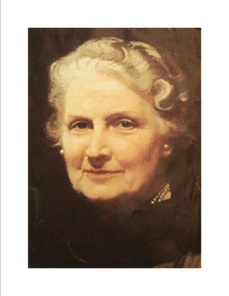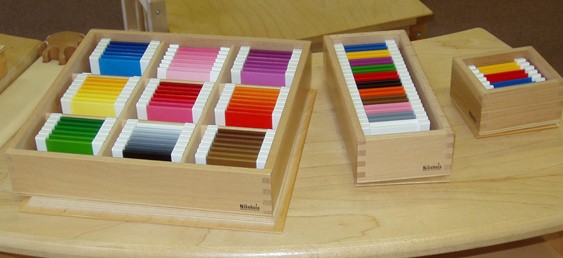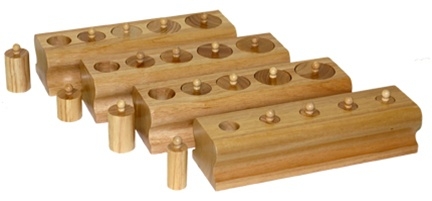About Montessori
|
The Montessori method is both a methodology and educational philosophy. It was originally developed in the early 1900s by Dr. Maria Montessori as a way to educate poor children in her native Italy. Maria Montessori (Born August 31, 1870 – Died May 6, 1952) was an Italian educator, scientist, physician, philosopher, feminist, and humanitarian, the first early childhood educator to be nominated for the Nobel Peace Prize.
She was born in Chiaravalle (Arcona), Italy to Alessandro Montessori and Renilde Stoppani. Maria was the first female to graduate from the University of Rome Medical School. She was a member of the University’s Psychiatric Clinic and became intrigued with trying to educate the mentally challenged and the uneducable in Rome. |
By 1907 Montessori established the first Casa dei Bambini or Children's House, in Rome. By 1913, there was an intense interest in her method in North America, which later waned. Nancy McCormick Rambusch revived the method in Aniehca by establishing the American Montessori Society in 1960. Montessori was exiled by Mussolini mostly because she refused to compromise her principles and make the children into soldiers. She moved to Spain and lived there until 1936 when the Spanish Civil War broke out. She then moved the Holland until 1939. During a conference in India she was held by the authorities and lived there for the duration of the war. Montessori lived out the remainder of her life in the Netherlands, which is now the headquarters of the AMI, or Association Montessori Intenationale. She died in Noordwijk aan Zee. Her son Mario the AMI until his death in 1982.
The Montessori method of education that she derived from this experience has subsequently been applied successfully to children and is quite popular in many pats of the world. Despite much criticism of her method in the early 1930s-1940s, her method of education has been applied and has undergone a revival. It can now be found on six continents and throughout the United States.
The Montessori method of education that she derived from this experience has subsequently been applied successfully to children and is quite popular in many pats of the world. Despite much criticism of her method in the early 1930s-1940s, her method of education has been applied and has undergone a revival. It can now be found on six continents and throughout the United States.
Aside from a new among the premier contributions to educational thought by Montessori are:
- Instruction of children in 3-year groups, corresponding to sensitive periods of development (example: Birth-3, 3-6, 6-9, and 9-12 year olds with an Erdkinder (German for "land children") program for early teens.
- Children as competent beings, to maximal decisions.
- Observation of the child in the environment as the basis for ongoing curriculum development (presentation of subsequent exercises for skill development and information accumulation).
- Small, child sized furniture and creation of a small, child-sized environment (microcosm) in which can be competent to produce overall a self-running a small children's world.
- Parent participation to include basic and proper attention to health screening and hygiene as a prerequisite to schooling.
- Delineation of a scale of sensitive periods of development, which provides a focus for class that is appropriate and uniquely stimulating and motivating to the child (including sensitive periods for language development, sensorial experimentation and refinement, and various levels of social interaction).
- The importance of the "absorbent mind," the limitless motivation of the young child to competence over his or her environment and to perfect his or her skills and understandings as they occur within sensitive period. The phenomenon is by the young child's for repetition of within sensitive period categories (Example: exhaustive babbling as language practicing to language competence).
- Self-correcting "auto-didactic" materials (sample based on of Jean Marc Gaspard Itard and Edouard Seguin).
|
As an educational the Montessori method's focus is on the individuality of each child in respect of their needs or talents, as opposed to the needs of the class as a whole. A goal is to help the child their natural by of learning.
The Montessori method encourages a great deal of independence, freedom within appropriate limits, which is always linked with responsibility. The youngest children are guided in life" skills towards taking care of themselves, their environment, and with others. Integral to the life are essential skills such as focusing of attention, hand-eye-body coordination, and the students' ability to what they set out to do. The Montessori Method states that contentment, as a result from the child having and guidance to be full participants in daily events. There are also and enticing materials with which the child gains a foundation for and other skills. Montessori education carried through the elementary and high school years follows the child's emerging tendency for peer and still emphasize student as guardian of his or her own intellectual development. |
Also, click on the following for more information regarding Montessori
education:
|



